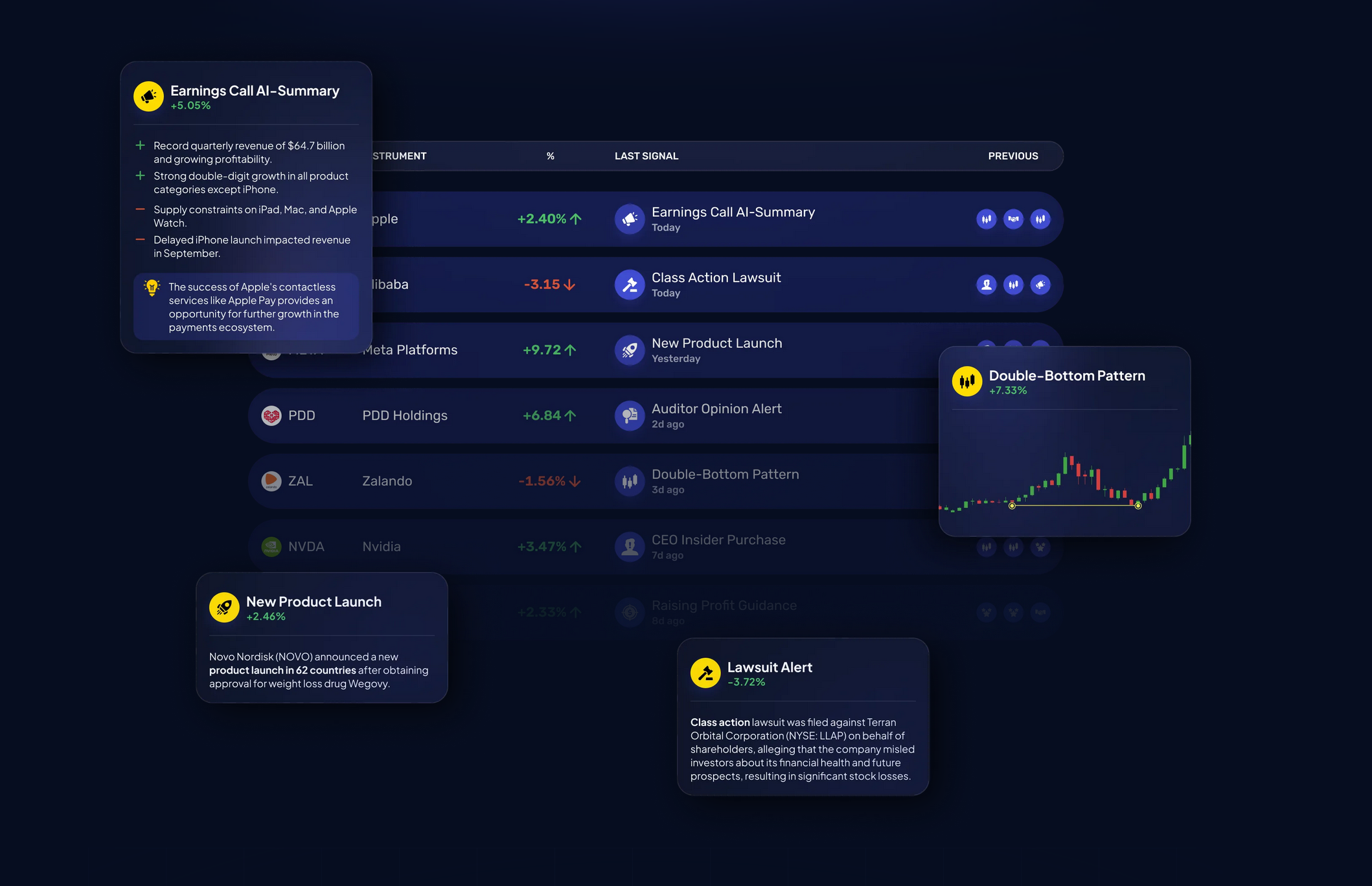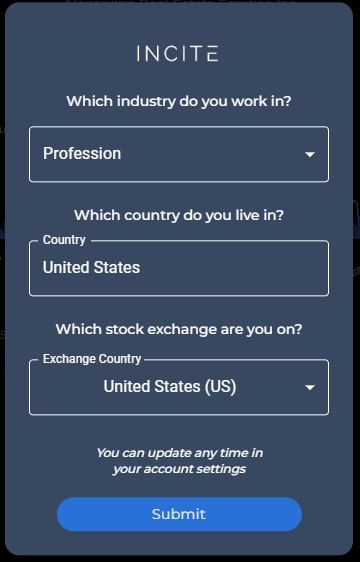20 Top Facts For Picking AI Stock Picker Platform Sites
20 Top Facts For Picking AI Stock Picker Platform Sites
Blog Article
Top 10 Tips To Evaluate The Strategy Customization Of Ai Stock Analysing Trading Platforms
The ability to tailor the trading platform in accordance with your goals in trading as well as your tolerance for risk and current market conditions is an important feature of AI-based stock prediction and analysis trading platforms. Platforms that have powerful customization capabilities can boost your trading efficiency. Here are the top ten tips to evaluate the capabilities to customize strategies on these platforms:
1. Evaluate Pre-Built Strategy Templates
The variety of templates available: Check if the platform provides a variety of built-in trading strategies (e.g. day trading, swing investing, long-term investments).
Easy to use: Check how easy it is to apply and alter these templates to meet your needs.
Performance history: Determine whether you can access the historical data of the performance of strategies that you have already built.
2. Review Customized Strategy Creation
Drag-and-drop tools: Search for platforms with intuitive drag-and-drop interfaces for creating unique strategies.
Coding options: For users who are more advanced, check if the platform supports custom programming in proprietary scripting language (e.g. Python, R).
Flexibility. Make sure you can identify key elements such as risks management parameters, entry/exit regulations, and any other elements of your plan.
3. Check for Backtesting Capabilities
Historical data: Make sure that the platform has sufficient historical data to backtest strategies.
Customizable Parameters: You should be able to adjust parameters, including timeframes and indicators, during backtesting.
Performance metrics: Make sure the platform has detailed metrics of performance (e.g. Win rate Sharpe Ratio, Drawdown) when backtesting strategies.
4. Evaluate Real-Time Strategy Testing
Paper trading: Make sure that the platform offers paper trading and simulation modes to test strategies in real-time without placing your money at risk.
Live testing: Check whether you can test strategies live in markets using tiny amounts of capital to test their effectiveness.
Real-time Adjustments: Determine whether you can make adjustments in real-time according to the market conditions.
5. Evaluation of Integration based on Technical Indicators
Check if there is an indicator library.
Custom indicators: You should be able to create or import your own indicators which you can utilize in your plans.
Make sure the platform allows you to mix multiple indicators into complex strategies.
6. Check for Risk Management Tools
Stop-loss/take-profit: Ensure the platform allows you to set stop-loss and take-profit levels within your strategies.
Size of the position. Find out if you are able to create rules for sizing positions (e.g. percentage, set amount) and manage the risk.
Risk-reward: Find out if your platform lets you define risk-rewards for each trade or strategy.
7. Evaluate Multi-Asset Strategy Support
Asset classes: Make sure that the platform provides strategies for a variety of asset classes.
Cross-asset strategies: Determine if you can create strategies that involve different asset classes (e.g. pairings trading, hedging).
Market coverage: Make sure that the platform is able to cover those markets that you're interested in (e.g., US, international, cryptocurrencies).
8. Assess the automation and Execution
Automated trading: Ensure that the platform can automate execution of strategies based on predefined rules.
Order types - Make sure the platform can support a variety of order types that can be used to execute strategies (e.g. stop, limit or market).
Check for latency: Make sure that the platform permits trades to be executed with the least amount of delay. This is especially important when it comes to high-frequency strategies.
9. Review the Strategies Optimization Tools
Parameter Optimization: Check whether the platform offers tools for optimizing the parameters of strategies (e.g. genetic algorithms grid search, genetic algorithms).
Machine learning: Ensure that the platform has machine learning integrated to refine and improve strategies.
Scenario Analysis: Check whether the platform can test strategies across various market scenarios (e.g. bull or bear and volatile).
Review the User Feedback and Community Feedback
User reviews: Review user feedback in order to assess the platform's ability to tailor strategies.
Forums for communities: Find out if there is an active user community who are willing to share their strategies and ideas.
Support resources. Check for webinars or tutorials that can assist you in developing and optimizing your strategies.
Bonus Tips
Free trial period: You are able to test out the customization options of the platform using a the demo or trial.
Scalability: Make sure the platform is able to manage complex strategies that change as you trade.
Customer support: Find out if there's support for your inquiries or concerns relating to the strategy.
Following these tips can help you assess the ability of AI trading platforms to modify their strategies. You'll be able to choose the best platform for your needs in trading and allow to you to fine-tune and implement your plan. A platform that has strong customization options can empower you to adjust to changing market conditions and enhance your trading performance. Check out the most popular click here for ai for stock trading for blog tips including ai trade, options ai, options ai, ai stock trading app, ai for investing, ai for trading, ai stock trading bot free, best ai stock, ai stock picker, ai investing and more.
Top 10 Suggestions For Assessing The Risk Management Aspect Of Ai Stock Predicting/Analyzing Platforms
Risk management plays a crucial function in any AI-based platform for trading stocks. It safeguards your investment by limiting the risk of losses and helps you to maximize profits. Platforms that have robust risk management features will help you navigate the market volatility and make an decisions based on information. Here are the top ten suggestions for assessing risk management capability of these platforms.
1. Review Stop-Loss Features, Take-Profit Features
Levels that can be customized - Make sure that the platform lets you adjust your stop-loss, take profit and profit level for each trade or strategy.
Make sure the platform is able to allow the use of trails stops. They automatically adjust themselves as market moves in your favor.
It is important to determine whether there are stop-loss options that will ensure that your position will be closed at the agreed rate, even if the market is volatile.
2. Useful Tools for Assessing Position Size
Fixed amount - Ensure that you can define the size of your positions according to a certain amount.
Percentage: Check whether you can define your position sizes as proportion to the value of your portfolio. This will enable you to control risk more effectively.
Risk-reward ratio: Check to see if you can define the risk-reward percentages for specific trades or strategies.
3. Look for assistance with diversification
Multi-assets trading: Verify that the platform is able to support trading across different asset categories (e.g. ETFs, stocks options, forex, etc.) to diversify your portfolio.
Sector allocation: Check whether your platform provides tools for managing and monitoring the exposure to sectors.
Diversification of geographic areas. Make sure the platform can trade on international markets and spread geographic risk.
4. Assess margin and leverage control
Margin requirements: Ensure that the platform clearly outlines any margin requirements for trading leveraged.
Make sure your platform lets you to set limits on leverage in order to manage risk exposure.
Margin calls: Make sure you get prompt notifications from the platform to prevent account liquidation.
5. Assess Risk Analytics and Reporting
Risk metrics: Check whether the platform has the most important risk-related metrics, such as Value at Risk, Sharpe ratio, as well as Drawdown for your portfolio.
Assessment of scenarios: Determine if you can simulate different market scenarios on the platform to evaluate possible risks.
Performance reports: Check whether you can obtain detailed performance reports from the platform. These reports include risk-adjusted performance results.
6. Check for Real-Time Risk Monitoring
Portfolio monitoring - Make sure that the platform you select offers real-time monitoring to ensure your portfolio is secure.
Alerts and notifications - Check that the platform has sent out alerts in real-time when risk events occur (e.g. margin breaches or triggers for stop-loss order).
Risk dashboards – Check to see if the platform you are using offers customized risk dashboards. This will give you an overview of the risks you're facing.
7. How do you evaluate the results of Stress Testing and Backtesting
Stress testing: Make sure that the platform will allow you to test your portfolios or strategies during extremely difficult market conditions.
Backtesting: Find out whether the platform allows backtesting strategies with previous data to evaluate the risk and effectiveness.
Monte Carlo Simulators: Verify whether the software uses Monte Carlo models to model potential outcomes and determine the risk.
8. Risk Management Regulations - Assess the compliance
Compliance with the regulatory requirements: Make sure the platform is compliant with the applicable risk management regulations in Europe and the U.S. (e.g. MiFID II).
Best execution : Examine to see if your platform follows the most efficient execution methods. This guarantees that trades are executed at the highest possible price, minimising slippage.
Transparency - See whether the platform is able to disclose risks in a clear, transparent way.
9. Examine for Risks that are User Controlled Parameters
Custom Risk Rules: Ensure that you have the ability to create custom rules for managing risk (e.g. the maximum amount of loss per day, a certain size of a tradable position).
Automated risk control: Verify that the platform is able to enforce the risk management guidelines automatically, based on your predefined requirements.
Make sure the platform supports manual overrides to automated risk control.
Review Case Studies and User Feedback
Review by users: Conduct studies to evaluate the platform's effectiveness in managing risk.
Case studies Find cases studies or testimonials, that prove the ability of the platform to manage the risk.
Community forums: Check if a platform has an active community of users who are willing to share strategies and suggestions for managing risks.
Bonus Tips
Trial period: Take advantage of an unpaid trial or demo to test the platform's risk management features in real-world situations.
Support for customers: Ensure that your platform has a robust assistance for any questions or issues related to risk management.
Educational sources: Find out whether your platform has educational materials or tutorials that provide information on risk management techniques.
These tips will help you evaluate the risk management capabilities of AI analysis and stock prediction platforms. This way, you'll be able to select a platform that protects your capital and limits potential losses. To ensure that your trading is successful and manage volatile markets, strong risk management tools are essential. Have a look at the best ai tools for trading advice for more recommendations including ai investment tools, ai tools for trading, ai trading tool, ai stock trader, ai stock trader, best ai penny stocks, best stock prediction website, ai share trading, best ai stocks, ai software stocks and more.